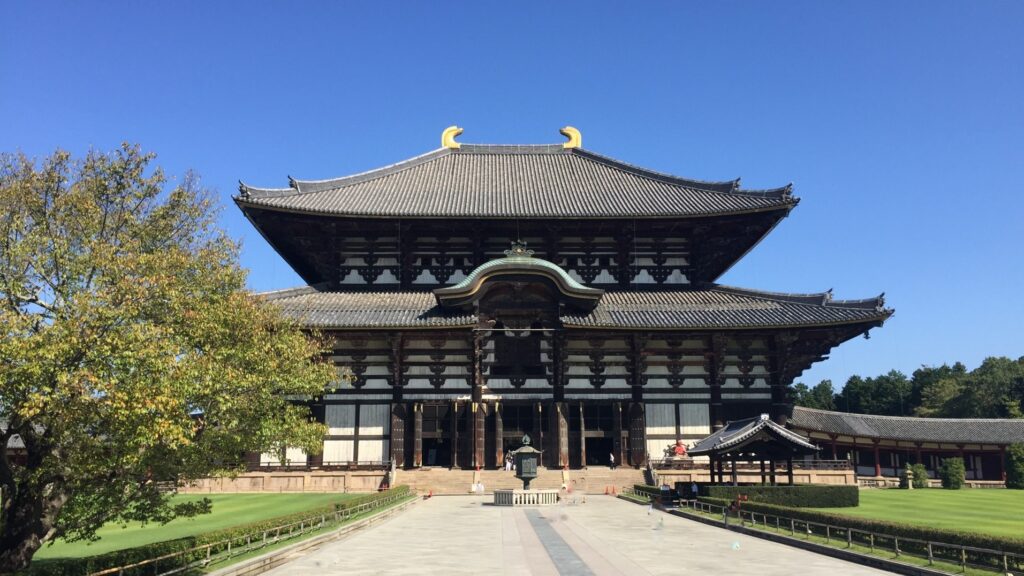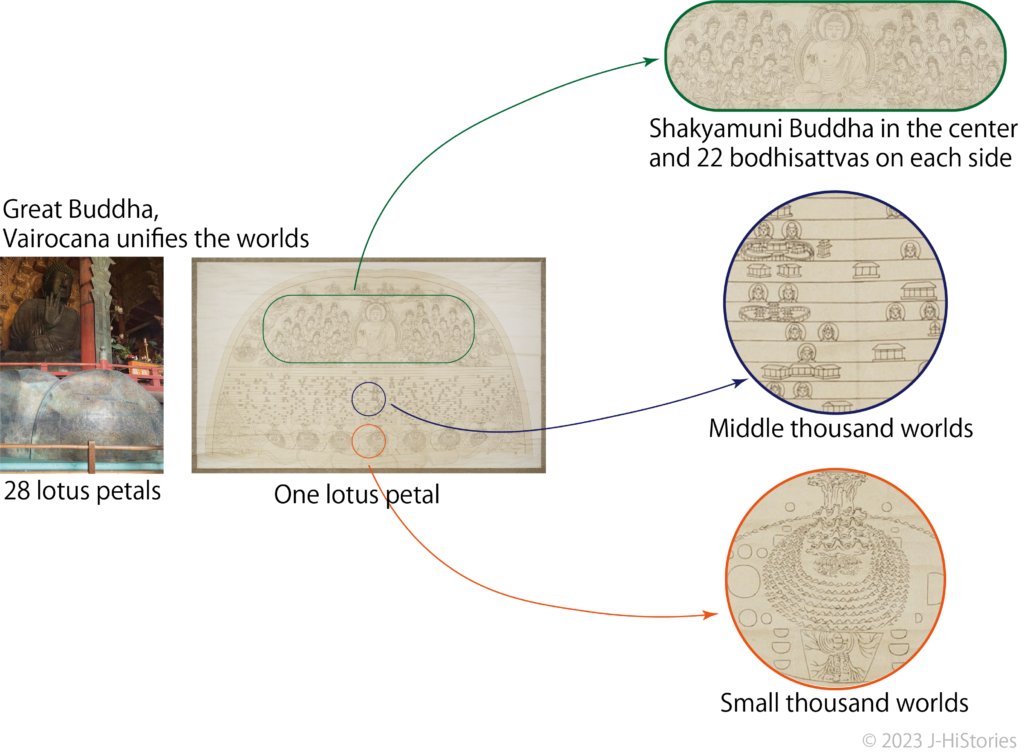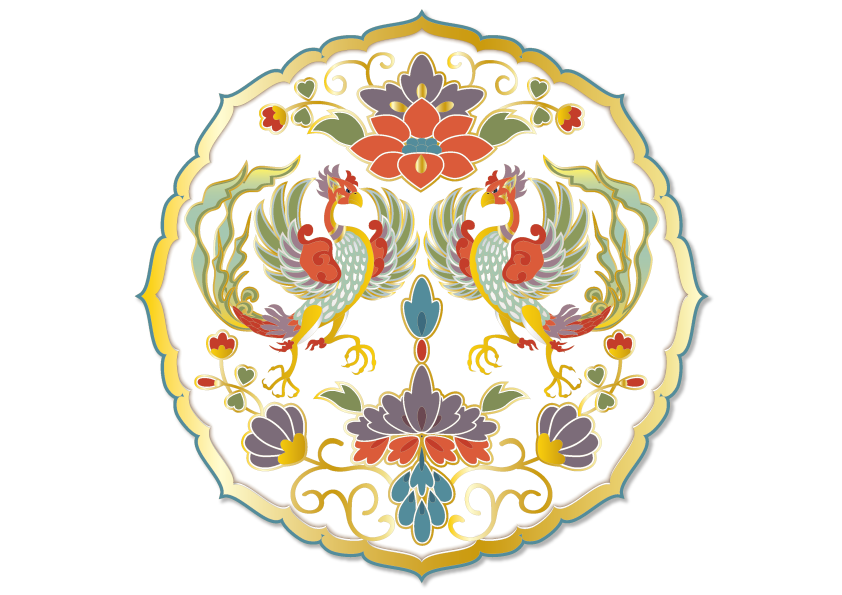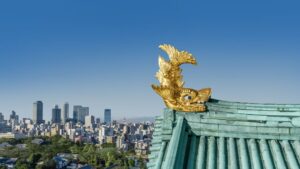Todaiji Temple and Great Buddha: Emperor Shomu's Vision to Restore a Nation in Crisis
Todaiji Temple, a UNESCO World Heritage Site in Nara, is home to Japan's largest bronze statue, the Great Buddha. Built under Emperor Shomu during a time of devastating smallpox epidemics and social unrest, comparable to the plague in medieval Europe, the temple was conceived as a national project to restore peace and unity through the power of Buddhism.
Towering east of the former Heijo-kyo palace at the foot of Mt. Wakakusayama, the immense Great Buddha Hall—once far larger than today—symbolizes the emperor’s determination to heal the nation both materially and spiritually. Why did Emperor Shomu build Todaiji? The answer lies in his resolve to confront the crisis and govern the country through the blessings of the Buddha.

Natural Disasters, Epidemics, and Famines are All Due To My Lack of Virtue

Upon his accession to the throne in 724, the 45th Emperor Shomu (701-756, 聖武天皇) began a government to care for his people as the exerciser of the sovereignty entrusted to him by the Imperial Ancestor, the deity Amaterasu-Omikami. It was a political philosophy that if people had enough food, clothing, and a house to live in, they would naturally have a peaceful world. In 735, however, the situation changed drastically. Drought, famine, major earthquakes, and the smallpox epidemic increased dramatically, impoverishing and throwing the world into turmoil. Emperor Shomu issued a decree in favor of rice payments, amnesty, and tax reductions, stating that all due to my lack of virtue. However, the storm of natural disasters and the smallpox epidemic did not cease.
Approximately 1 to 1.5 million lives were lost by smallpox, accounting for an estimated 25 to 35% of the population at that time. The mortality rate was comparable to that of the plague in medieval Europe.
Source: by Professor Willam Wayne Fariis in a book of "違和感の日本史 by 本郷和人"
Born as the First Crown Prince of the Fujiwara Clan
Emperor Shomu was born in 701. He was the first crown prince born to a woman of the powerful Fujiwara clan, a daughter of Fujiwara Fuhito. Because of this maternal connection, the four Fujiwara brothers - his uncles - increased their political influence as Prince Shomu grew up. In 729, they forced their chief rival, the Minister of the Left, Prince Nagayao, to commit suicide, clearing the way for Shomu's accession to the throne. After the incident, the Fujiwara brothers firmly seized the political power.
However, the situation soon changed. In 737, all four brothers died in rapid succession. Emperor Shomu feared the tatari (curse) of Prince Nagayao. During his reign, he was confronted not only with natural disasters and epidemics but also with political struggles and the fear of tatari.
The Teaching of Kegon Buddhism Fulfilled Shomu's Fondest Wish

With nearly one-third of the population lost to smallpox, famine unrelenting, and Prince Nagayao’s tatari, Emperor Shomu sought help from the power of Buddhism for salvation, particularly the Kegon teachings. Kegon Buddhism views the world as vast and dynamic, linked to a lotus flower unfolding. It teaches that all things in this world are infinitely interconnected, mutually communicating, cooperating, and overlapping. In essence, the individual builds the whole. Desiring to have this teaching as the foundation of Japan's prosperity, Emperor Shomu issued an imperial edict in 741 ordering the construction of provincial temples throughout the nation. In 743, he further commanded the construction of Todaiji Temple and its Great Buddha, a statue of Vairocana Buddha. Through these projects, he aimed to govern the nation by uniting the people through compassion-inspired Buddhist teachings.
In this way, Emperor Shomu created a nationwide system to disseminate the Kegon teachings. He called upon the people to participate in the construction of the Great Buddha, urging contributions of "a branch of grass and a handful of the soil." This unprecedented national project ultimately involved 2.6 million people- nearly half of Japan's population at the time. Amid widespread suffering, the people themselves also sought salvation.
However, securing sufficient gold for the casting of the Great Buddha proved difficult. The project was saved by the discovery of a gold vein in Wakutani Town in the Tohoku region in 749, which enabled the statue's completion. In 752, the Todaiji Temple was completed, and a ceremony was held to consecrate the Great Buddha.
The Universe is a Unity, and an Individual Builds the Whole
Kegon's concept that "the individual builds the whole" is well expressed in the sculpture adorning the base of the Great Buddha. The pedestal is composed of 28 lotus petals, each intricately depicting a cosmogical vision.
At the lowest level of each petal is the "Small Thousand Worlds," above which appears the "Medium Thousand Worlds." Tising further are 25 horizontal lines depicting the heads of bodhisattvas, along with palaces, animals, and other beings. At the very top level, Shakamuni Buddha, flanked by 22 bodhisattvas, unites these layered worlds. On top of the 28 lotus petals, which symbolically represent 1,000 petals, Vairocana Buddha embraces and integrates all worlds into a single cosmic whole.

(東大寺大仏蓮弁線刻図模本 宮原柳僊筆 奈良国立博物館所蔵)
A Monarch, Emperor Shomu
Emperor Shomu abdicated the throne in 749 and, in 754, finally received the long-awaited Buddhist precepts from the eminent monk Ganjin (688-763, 鑑真). Two years later, he passed away. Despite a reign marked by natural disasters and political turmoil, Emperor Shomu remained a compassionate ruler at heart. Through the construction of Todaiji Temple and the Great Buddha, he sought not only to restore the nation but also to heal it spiritually by uniting the people through Buddhist teachings. These endeavors became a lasting foundation for peace and prosperity, extending their blessings to all living beings.

Over 9,000 objects that Emperor Shomu had been fond of during his lifetime were offered to Todaiji by his wife, Empress Komyo. We can enjoy seeing his possessions once a year at the special exhibition in the Nara National Museum, for which the emperor’s order is needed to open the door of the Shosoin Repository of Todaiji to display out treasures. The beauty of the heirlooms gives a sense of the advanced craft arts of the time.
In addition, the treasures have been preserved and passed down from person to person for over 1300 years, and continue to shine to this day.
Emperor Shomu Timeline
| 701 | Emperor Shomu was born | Age =1 | Asuka Period |
| 707 | Reigning Empress Genmei acscended the throne | - | |
| 710 | Relocation of the capital to Heijo-kyo in Nara from Asuka | - | Nara Period |
| 721 | Reigning Emperor Genmei passed away | - | |
| 724 | Emperor Shomu ascended to the throne | 24 | |
| 729 | Nagayao incident occurred | 29 | |
| 737 | Fujiwara four brothers died of smallpox | 37 | |
| 741 | Emperor Shomu's Imperial order to establish Kokubunji Tenmples | 41 | |
| 743 | Todaiji Great Buddha construction started till 752 | 42-51 | |
| 749 | Emperor Shomu abdicated from the throne | 49 | |
| 756 | The retired Emperor Shomu passed away | 56 | |
| 794 | The relocation of the capital to the city to Heian-kyo in Kyoto | - | Heian Period |
Recommendations to visit
- Access: 10 min from JR or Kintetsu Nara Station. Take bus #77 bound for Kasugataisha Honden (春日大社本殿). Get off at Todaiji Daibutsuden (東大寺大仏殿) bus stop
- Access: 7 min from JR or Kintetsu Nara Station. Take bus #77 bound for Kasugataisha Honden (春日大社本殿). Get off at the National Museum (国立博物館) bus stop


